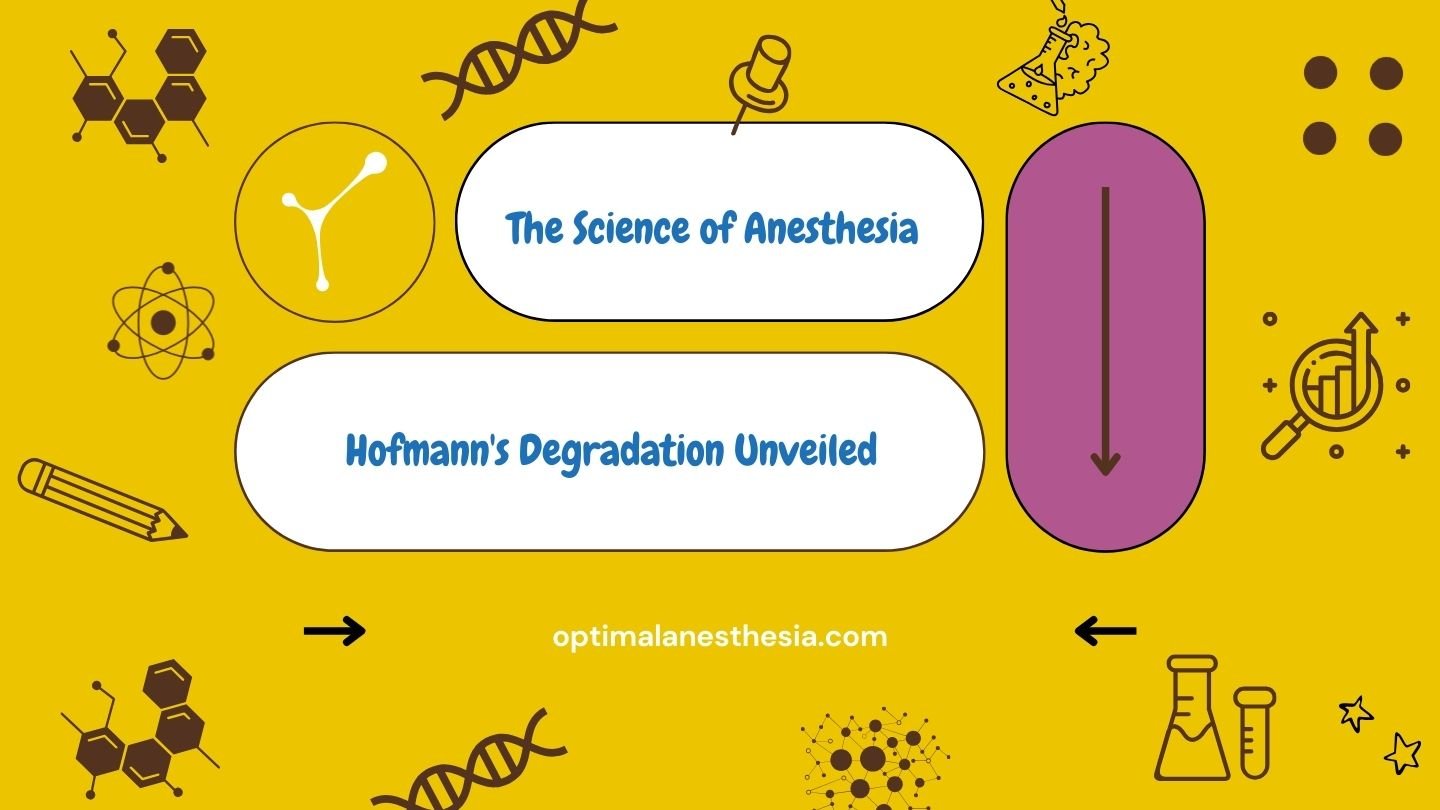Neuromuscular blocking agents (NMBAs) are vital tools in the field of anesthesia, facilitating muscle relaxation during surgical procedures. A comprehensive understanding of these agents, their metabolic pathways, and potential risks is crucial for anesthesiologists to ensure safe and effective administration. One metabolic process of particular importance is Hofmann’s degradation, also known as Hofmann elimination, which affects NMBAs, including atracurium, cisatracurium, and mivacurium. In this article, we delve into the history, chemical process, and clinical implications of Hofmann’s degradation in anesthesia, including the accepted levels of laudanosine and at what level it can cause seizures and sedation.
History
Hofmann’s degradation, named after the eminent German chemist August Wilhelm von Hofmann, was first documented in the 19th century. This revolutionary reaction allowed the conversion of primary amides into primary amines while liberating carbon dioxide (CO2). Hofmann’s work laid the groundwork for our understanding of organic synthesis and reaction mechanisms.
Chemical Process
Hofmann’s degradation involves the conversion of primary amides to primary amines with the liberation of CO2. The reaction proceeds as follows:
Amide + Halogen + Strong Base → Primary Amine + Carbon Dioxide (CO2)
This reaction has applications across various fields, including the degradation of specific NMBAs in anesthesia.
How Atracurium, Cisatracurium, and Mivacurium Undergo Hofmann’s Elimination
Atracurium, cisatracurium, and mivacurium are NMBAs used in anesthesia. They undergo Hofmann’s degradation through non-enzymatic hydrolysis, leading to the formation of primary metabolites, including laudanosine. This process involves the cleavage of specific chemical bonds in the drug molecules, generating metabolites through ester bond hydrolysis.
The Effect of Laudanosine Accumulation
Laudanosine is a metabolite of Hofmann’s degradation, and during prolonged administration of NMBAs, such as atracurium, it can accumulate in the body. The exact duration required for significant laudanosine accumulation can vary among patients and depends on factors like drug dosage, metabolism, and individual patient characteristics.
The accepted levels of laudanosine without significant clinical effects can also vary. Typically, sedation and minor CNS effects might begin to manifest at levels above 1000 ng/ml, and seizures, if they occur, are more likely at levels exceeding 10,000 ng/ml. However, these thresholds are not universally fixed and can vary based on individual patient factors and the specific clinical context.
The Future of Hofmann’s Elimination in Anesthesia
As the field of anesthesia and pharmacology continues to evolve, ongoing research into novel agents and alternative metabolic pathways offers the promise of improved safety profiles. The future of Hofmann’s elimination in anesthesia entails the refinement of drug options and administration protocols, ultimately reducing the reliance on agents subject to Hofmann’s degradation.
Why This Topic Is Important for Anesthesiologists in Clinical Practices
Understanding Hofmann’s degradation is paramount for anesthesiologists, as it directly impacts patient safety and the efficacy of neuromuscular blockade during surgical procedures. By comprehending the metabolic pathways and potential risks associated with NMBAs like atracurium, cisatracurium, and mivacurium, anesthesiologists can make well-informed decisions regarding drug selection, dosing, and monitoring during anesthesia. This knowledge facilitates the optimization of patient care and the minimization of adverse effects linked to the extended use of drugs, especially in cases where laudanosine accumulation poses a threat to the central nervous system.
In conclusion, Hofmann’s degradation remains an indispensable topic in anesthesia, guiding the use of NMBAs and driving ongoing research to enhance drug safety and efficacy in clinical practice. Anesthesiologists play a pivotal role in ensuring the proper administration of drugs and vigilant monitoring to deliver safe and effective anesthesia care.


